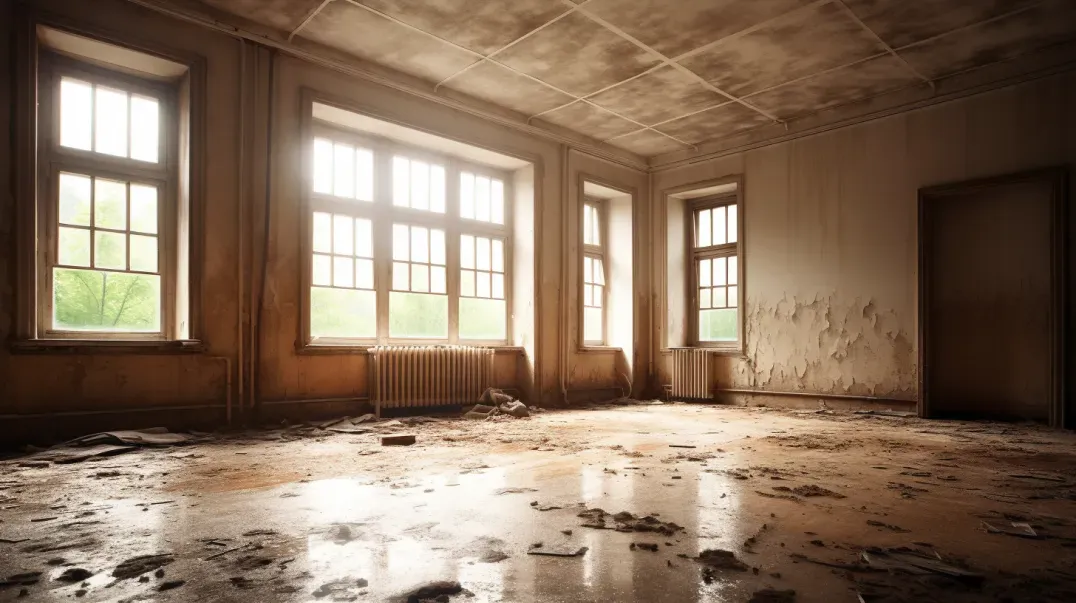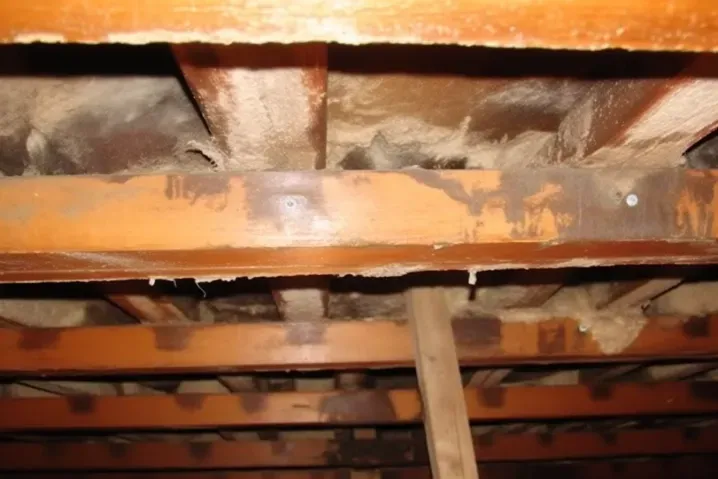Seasonal Changes and Crawl Space Mold
As the seasons change, so do the conditions in our homes, particularly in areas like crawl spaces that are susceptible to environmental influences. This blog aims to explore the intricate relationship between seasonal changes and mold growth in crawl spaces, shedding light on how different times of the year can impact the propensity for mold infestations in these hidden areas of our homes.
Mold growth in crawl spaces is not a static issue; it fluctuates with seasonal variations in temperature and humidity. Understanding how these seasonal factors contribute to mold proliferation is crucial for homeowners seeking to maintain a healthy and mold-free environment. In the warmer, more humid months, crawl spaces can become hotbeds for mold growth due to increased moisture and warmth. Conversely, in colder seasons, heating systems and lack of ventilation can create conditions that are still conducive to mold growth.
This blog will delve into the specifics of how each season can uniquely affect crawl spaces and contribute to mold issues. We will discuss the importance of being proactive and adapting your mold prevention strategies to align with these seasonal changes. From maintaining proper ventilation and humidity levels to regular inspections and timely interventions, understanding the seasonal dynamics of mold growth is key to effective mold management in crawl spaces.
Join us as we navigate through the seasonal challenges of mold growth in crawl spaces, providing you with the knowledge and practical tips needed to effectively manage these issues throughout the year and ensure a healthy living environment in your home.
The Science of Mold Growth in Relation to Seasons
Understanding the science behind mold growth and its relation to seasonal changes is crucial for effective mold management in homes. This section of the blog aims to provide readers with a foundational understanding of what mold is, including its types and ideal growth conditions, and an explanation of how different seasons create varying conditions that can either inhibit or encourage mold proliferation.
What is Mold?
Mold is a type of fungus that plays a significant role in the natural environment by breaking down dead organic matter. However, when it grows unchecked in homes, it can cause problems. Here are some key aspects of mold:
- Characteristics: Mold grows from tiny spores that are invisible to the naked eye and can be found both indoors and outdoors. It thrives in moist, warm environments.
- Types of Mold: There are numerous types of mold, but some common ones found in homes include Aspergillus, Penicillium, and Stachybotrys chartarum, commonly known as black mold.
- Ideal Growth Conditions: Mold typically requires moisture, a food source (like wood, paper, or fabric), and suitable temperatures. It can start growing within 24 to 48 hours under the right conditions.
How Seasons Affect Mold Growth
Different seasons bring varying environmental conditions that can significantly impact mold growth in homes, particularly in areas like crawl spaces:
- Spring and Summer: These warmer months often bring higher humidity and moisture, which can create ideal conditions for mold growth. Increased air moisture, rain, and in some cases, flooding, can contribute to mold proliferation.
- Fall and Winter: While cooler temperatures in fall and winter might seem less conducive to mold growth, heating systems in homes can increase indoor humidity levels. Additionally, closed windows and poor ventilation can trap moist air inside, fostering mold growth.
- Seasonal Maintenance: Understanding these seasonal dynamics is key to mold prevention. In warmer months, focus on reducing indoor humidity and ensuring proper ventilation. In cooler months, address insulation and heating to maintain balanced humidity levels.
By comprehensively understanding mold and how its growth is influenced by seasonal changes, homeowners can implement more effective strategies to prevent mold growth, ensuring a healthier living environment throughout the year.
Seasonal Maintenance and Mold Prevention Strategies
Effective mold management in homes, particularly in areas like crawl spaces, requires a proactive approach, adapting to the changes each season brings. This section of the blog focuses on the importance of routine crawl space inspections and provides a comprehensive checklist for seasonal maintenance aimed at preventing mold growth.
Routine Crawl Space Inspections
Regular inspections of your crawl space are essential for early detection and prevention of mold. Here's a guide on how and when to conduct these inspections:
- Timing: Ideally, crawl space inspections should be conducted with the change of each season. This helps in addressing any issues that arise due to seasonal variations in temperature and humidity.
- What to Look For: During inspections, look for any signs of moisture accumulation, such as water pooling, leaks, or condensation. Also, check for visible mold growth, musty odors, or any deterioration in insulation and vapor barriers.
- Safety Measures: Ensure safety when entering a crawl space. Wear protective clothing, a mask, and gloves, and use proper lighting. If the space is too confined or if you suspect a serious mold issue, consider hiring a professional.
Seasonal Maintenance Checklist
A well-planned seasonal maintenance routine can significantly reduce the risk of mold growth. Here’s a comprehensive checklist:
- Spring:
Check for any water damage caused by melting snow or spring rains.
Ensure proper drainage around the foundation of your home.
Inspect and clean gutters and downspouts.
- Summer:
Focus on controlling humidity levels. Use dehumidifiers if necessary.
Ensure good ventilation, especially on hot, humid days.
Check for plumbing leaks or condensation issues.
- Fall:
Prepare for colder weather by ensuring crawl spaces are properly insulated.
Seal any cracks or openings to prevent moisture entry.
Clean gutters and downspouts to ensure proper drainage during rains.
- Winter:
Monitor humidity levels and maintain adequate ventilation.
Inspect pipes for potential freezing and leaks.
Regularly check for signs of condensation or moisture buildup.
By following this seasonal maintenance checklist, homeowners can proactively address the factors that contribute to mold growth, ensuring a healthier and more comfortable living environment throughout the year.
Monitoring and Controlling Humidity and Moisture
Effective control of humidity and moisture is crucial in maintaining a healthy indoor environment and preventing mold growth. This section of the blog focuses on introducing tools essential for humidity and moisture control, such as dehumidifiers, ventilation systems, and moisture barriers, and emphasizes the importance of regular monitoring and adjustments to maintain an optimal indoor climate.
Tools for Humidity and Moisture Control
Managing indoor humidity and moisture levels requires the right tools. Here's an introduction to some key devices and systems:
- Dehumidifiers: These are essential in areas prone to high humidity. Dehumidifiers work by removing excess moisture from the air, helping to maintain a dry and mold-free environment.
- Ventilation Systems: Proper ventilation is crucial in preventing moisture buildup. This can include exhaust fans in bathrooms and kitchens, air vents in crawl spaces and attics, and whole-house ventilation systems that ensure continuous air exchange.
- Moisture Barriers: In areas like crawl spaces and basements, moisture barriers are used to prevent ground moisture from entering indoor spaces. These barriers are typically made of plastic or foil sheeting and are installed on walls and floors.
Regular Monitoring and Adjustments
Consistent monitoring and timely adjustments are key to effective humidity and moisture control:
- Regular Checks: Regularly check humidity levels in your home using a hygrometer. Ideal indoor humidity levels should be between 30-50%.
- Seasonal Adjustments: Be aware that humidity levels can change with the seasons. Adjust your use of dehumidifiers and ventilation systems accordingly.
- Responding to High Humidity: If you notice high humidity levels, take immediate action by increasing ventilation, using dehumidifiers, or checking for sources of excess moisture like leaks.
- Maintenance of Tools: Regularly maintain your dehumidifiers, ventilation systems, and moisture barriers to ensure they are functioning effectively. This includes cleaning filters, checking for blockages in vents, and inspecting moisture barriers for damage.
By utilizing the right tools and committing to regular monitoring and adjustments, homeowners can effectively control indoor humidity and moisture levels, creating a healthier living environment and preventing the conditions that lead to mold growth.
Professional Mold Assessment and Remediation
Dealing with mold in homes can be a complex task, often requiring expertise beyond the scope of typical DIY methods. This section of the blog discusses when it's necessary to seek professional help for mold issues and highlights the benefits of employing professional mold assessment and remediation services.
When to Seek Professional Help
Identifying when to call in a professional for mold issues is crucial for effective and safe mold management. Here are key situations that warrant expert intervention:
- Large-Scale Infestation: If the mold covers a large area (typically over 10 square feet), it's advisable to seek professional help. Large infestations can be challenging to handle safely and effectively without specialized equipment and expertise.
- Health Concerns: If occupants of the home are experiencing health issues that may be related to mold exposure, such as allergies or respiratory problems, professional assessment and remediation are crucial.
- Hidden Mold: If you suspect mold is growing in hidden areas such as inside walls, under floors, or in HVAC systems, professionals can conduct a thorough inspection using specialized tools.
- Water Damage: Following significant water damage, especially from flooding, it's important to have a professional assess potential mold growth, as it can develop quickly in these conditions.
Benefits of Professional Mold Services
Professional mold assessment and remediation services offer several advantages:
- Expertise and Experience: Professionals have the expertise to accurately assess the extent of mold issues and determine the most effective remediation strategies.
- Advanced Equipment: Professional services use advanced equipment for mold detection and removal, ensuring thorough and effective treatment.
- Safety: Handling mold can pose health risks. Professionals are equipped with the necessary safety gear and follow strict protocols to safely remove mold.
- Prevent Recurrence: Professionals not only address the existing mold but also identify the source of moisture that led to mold growth, helping to prevent future issues.
- Peace of Mind: Knowing that your mold issue has been handled by experts provides peace of mind and ensures a healthier living environment.
Professional mold assessment and remediation are vital for effectively addressing mold issues, especially in complex or severe cases. By understanding when and why to engage professional services, homeowners can ensure that mold problems are resolved safely and effectively.
Educating Homeowners on Seasonal Mold Risks
Awareness and education are key in effectively managing and preventing mold in homes, especially as risks vary with the changing seasons. This section of the blog is dedicated to helping homeowners understand the risks associated with seasonal mold and providing recommendations for resources to stay informed and proactive in mold prevention throughout the year.
Understanding the Risks of Seasonal Mold
Seasonal changes bring different challenges in terms of mold growth, making it important for homeowners to be aware of these varying risks:
- Spring and Summer: These warmer months often bring increased humidity and moisture, from rain and condensation, which can create ideal conditions for mold growth in homes.
- Fall and Winter: During the cooler months, heating systems can lead to uneven indoor temperatures and increased humidity in certain areas, while reduced ventilation can trap moist air inside, both of which can contribute to mold issues.
- Importance of Awareness: Understanding these seasonal dynamics is crucial for homeowners to take timely and effective actions to prevent mold. Being informed helps in recognizing early signs of mold growth and addressing them before they escalate.
Resources for Ongoing Education
Staying informed about mold prevention requires access to reliable and up-to-date resources. Here are some recommendations:
- Online Educational Platforms: Websites like the Environmental Protection Agency (EPA) and the Centers for Disease Control and Prevention (CDC) offer extensive information on mold, its health effects, and prevention strategies.
- Local Workshops and Seminars: Many communities offer workshops or seminars on home maintenance, including mold prevention. These can be great opportunities for direct learning and asking questions.
- Professional Consultations: Consulting with mold remediation and prevention experts can provide tailored advice specific to your home’s needs.
- Home Improvement Books and Guides: Many comprehensive guides are available that cover various aspects of home maintenance, including mold prevention.
- Social Media and Blogs: Following reputable home maintenance and health blogs, as well as social media accounts, can provide ongoing tips and updates on mold prevention strategies.
By utilizing these resources, homeowners can continuously educate themselves about the risks of seasonal mold and the best practices for prevention. This ongoing education is vital in maintaining a healthy living environment and protecting their homes from the potential damages caused by mold.
FAQs
Contact Lowcountry Crawlspaces Today!
Lowcountry Crawlspaces will do everything we can to ensure your experience with us is excellent.
Request A FREE Estimate
CHECKOUT RECENT POST



Schedule Your FREE Crawl Space Evaluation Today
There Is No Crawl Space Job We Can’t Fix!




